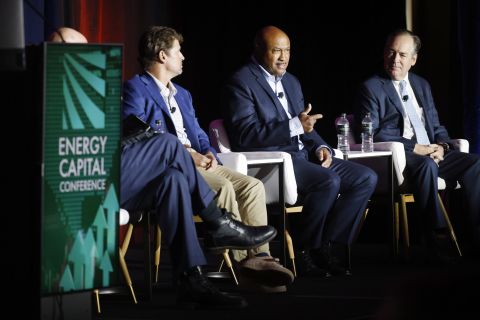The oil and gas workforce has declined sharply in the past 20 years and there are few signs of any significant growth ahead, according to results by a recent Ernst & Young LLP study. The firm notes that while the number of enrollees in the nation's top petroleum engineering schools has risen in the past few years, today's enrollment numbers pale in comparison to 1984 when the price of oil was reaching record highs. After commodity prices collapsed in 1986, technical, professional and field workers left the industry by the hundreds of thousands, "headed for what they believed to be greener pastures," says Charles Swanson, Ernst & Young director, Americas, oil and gas, and based in Houston. Then, he points out, when industry recovery came, those same workers didn't return and weren't replaced with new talent. According to the U.S. Bureau of Labor Statistics, the number of petroleum engineers dropped from a 1983 level of 33,000 to 18,000 in 2002. Similarly, the ranks of geologists and geophysicists during that same period contracted from 65,000 to 48,000. "Obviously, a dilemma 20 years in the making won't be solved overnight," says Swanson. "But by focusing our efforts, enhancing the industry's image and prioritizing existing resources, the trend can be reversed." For starters, he says, the industry must enhance its work with colleges and universities to educate young people about the opportunities in, and the highly technical nature of, the industry. "Though the oil and gas industry, by and large, has an unsophisticated image, it is one of the most technologically advanced industries available to scientifically inclined workers." Swanson also believes the industry must work to improve its image by emphasizing the contributions it makes to the world. Meanwhile, as a short-term solution, companies within the industry can begin attracting young professionals by wisely taking the dollars they have available for compensation and earmarking those for hiring and retaining talented technical workers while outsourcing noncore functions, he says. "This will allow companies to focus on what they do best, which has become increasingly difficult given today's overwhelming accounting and reporting requirements." Swanson adds that any successful strategies for reversing the industry workforce decline are long-term and won't increase the number of graduates in the oil and gas fields, even during the next few years. These strategies will, however, "help companies weather current shortages and build the framework for long-term improvement," he says. -Brian A. Toal
Recommended Reading
Analyst: Is Jerry Jones Making a Run to Take Comstock Private?
2024-09-20 - After buying more than 13.4 million Comstock shares in August, analysts wonder if Dallas Cowboys owner Jerry Jones might split the tackles and run downhill toward a go-private buyout of the Haynesville Shale gas producer.
BP Profit Falls On Weak Oil Prices, May Slow Share Buybacks
2024-10-30 - Despite a drop in profit due to weak oil prices, BP reported strong results from its U.S. shale segment and new momentum in the Gulf of Mexico.
Oxy’s Hollub Drills Down on CrownRock Deal, More M&A, Net-zero Oil
2024-11-01 - Vicki Hollub is leading Occidental Petroleum through the M&A wave while pioneering oil and gas in EOR and DAC towards the goal of net-zero oil.
Post Oak Backs New Permian Team, But PE Faces Uphill Fundraising Battle
2024-10-11 - As private equity begins the process of recycling inventory, likely to be divested from large-scale mergers, executives acknowledged that raising funds has become increasingly difficult.
Mexico Pacific Working with Financial Advisers to Secure Saguaro LNG I FID
2024-10-23 - Mexico Pacific is working with MUFG, Santander and JP Morgan to arrange the financing needed to support FID and the anchor phase of Saguaro Energía LNG.
Comments
Add new comment
This conversation is moderated according to Hart Energy community rules. Please read the rules before joining the discussion. If you’re experiencing any technical problems, please contact our customer care team.





